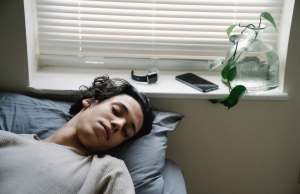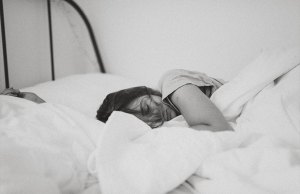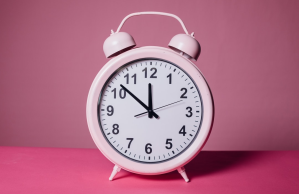
- Sleepwalking is a peculiar thing—but we’re not completely in the dark when it comes to this phenomenon.
- As it turns out, we sleepwalk when part of our brain is asleep and another part is awake; therefore, when we sleepwalk, we’re technically only half asleep.
- So, what causes our brain to be partly asleep and partly awake? The experts say poor sleep hygiene is to blame.
- The good news is that while poor sleep hygiene is a serious problem, it’s also typically an easy problem to address, as this simply involves changing our nighttime habits.
- To improve your sleep hygiene, first decide how much sleep you need each night and then abide by a sleep schedule that ensures you stay on track.
- Also, create a sleep environment that allows for a good night’s rest and spend a couple hours before bedtime winding down—soon enough, your brain will understand when it’s time to go to sleep, making this mission a whole lot easier to accomplish.
Sleepwalking is a strange phenomenon. It’s like two world are colliding—your awake and your asleep self. So, what exactly causes it? Why do some people get up and roam around in their sleep?

Why Do People Sleepwalk?
Chris Brantner, Certified Sleep Science Coach at SleepZoo.com, says sleepwalking has to do with your brain being half asleep. He explains below:
“Sleepwalking usually occurs during non-REM sleep when your brain isn’t active, but your body isn’t paralyzed as it is during REM sleep. It’s believed that two areas of the brain, the cortex and the limbic region, are awake while the frontal cortex and hippocampus remain asleep. So, you’re essentially half asleep.
This state of being half asleep may be evidence of sleep disruption. And this disruption can be caused by many things. Caffeine makes it difficult to get into deep sleep. Alcohol sedates you, but disrupts sleep as the body processes it. Stress is one of the most common causes of insomnia, making it difficult for the brain to properly shut down and get rest. Sleep disorders like sleep apnea keep you from progressing through the stages of sleep properly.
All of these can result in sleep walking. They make it difficult for your brain to progress through the stages of sleep properly, which theoretically could make it easier for you to get trapped in the half asleep phase. Incidentally, most of these causes are linked to poor sleep hygiene. So the first thing you should do to curb sleepwalking is take a hard look at your sleep hygiene and improve it.”
In summary, we sleepwalk when only part of our brain is asleep. This half asleep effect is often caused by poor sleep hygiene, which can cause many different sleep disruptions—not just the occasional night of sleepwalking. The good news is we can take sleepwalking matters into our own hands and make a few changes to improve our sleep hygiene.
Practice Good Sleep Hygiene: 4 Guidelines
If you’re a sleepwalker, or even if you sleepwalk on occasion, it’s worth looking into your sleep hygiene. The first step in doing so is understanding what sleep hygiene is. Simply put, your sleep hygiene encompasses your bedtime and nighttime habits. The nature of these habits determines whether you have good or bad sleep hygiene.
Now, you can analyze your sleep quality, look into your sleep routine, and determine if you could benefit from making some changes. Here are some basic guidelines for creating a sleep routine that will support good sleep hygiene:
- Know how much sleep you need.
Generally speaking, everyone needs around 7-8 hours of sleep per night. That said, the specifics change per age group—for example, the recommended sleep time for adults is 7-9 hours, while for teens it’s 8-10 hours. Check with the National Sleep Foundation to determine how much you need a night.
- Make and stick to a sleep schedule.
Once you know how much sleep you need, create a sleep schedule that will ensure you get that amount each night. Start by thinking about what time you have to wake up the next morning. If you need to wake up by 6 to get ready for work, then you should be asleep by 11 at the latest to ensure you get those 7 hours (as recommended for adults)!
- Create your optimal sleep environment.
There are a few elements you should pay attention to when it comes to your sleep environment: temperature, light, sound, and comfort. To achieve the best sleep, make sure your room isn’t too hot nor too cold. Also, it should be a dark, quiet room for optimal sleep. Finally, your bed (or whatever you’re sleeping on) should be a comfortable place to rest.
- Follow a relaxing nighttime routine.
Did you know you can train your brain? Come up with a bedtime routine that you perform each night. Soon enough, your brain will begin to associate this routine with bedtime and recognize when it’s time for bed. A few beneficial nighttime activities include turning off your electronics, meditating, taking a bubble bath or warm shower, journaling, and reading.












